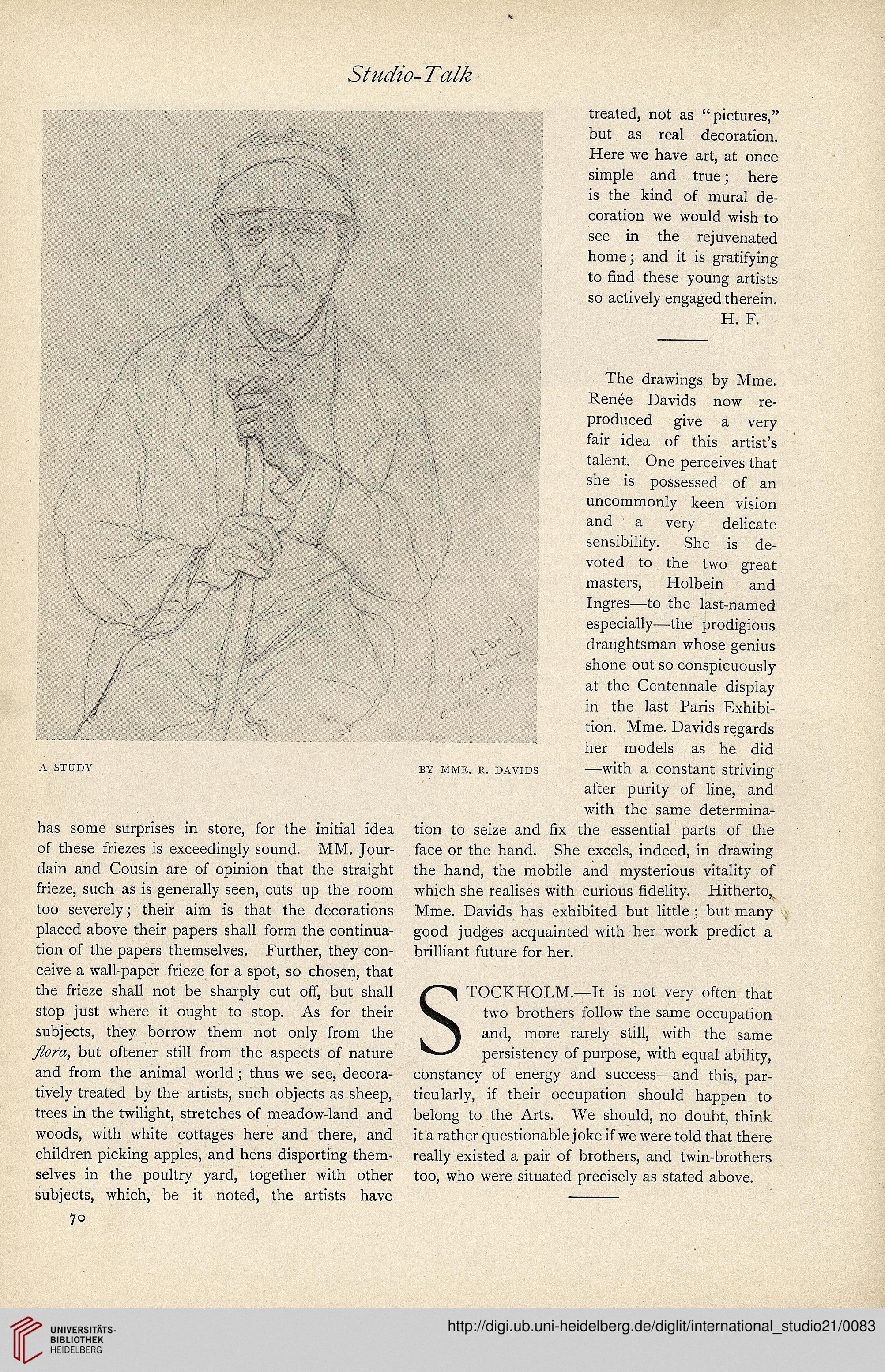A STUDY BY MME. R. DAVIDS
has some surprises in Store, for the initial idea
of these friezes is exceedingly sound. MM. Jour-
dain and Cousin are of opinion that the straight
frieze, such as is generalty seen, cuts up the room
too severeiy; their aim is that the decorations
placed above their papers shaH form the continua-
tion of the papers themselves. Further, they con-
ceive a wall-paper frieze for a spot, so chosen, that
the frieze shall not be sharply cut off, but shall
stop just where it ought to stop. As for their
subjects, they borrow them not oniy from the
but oftener still from the aspects of nature
and from the animal world; thus we see, decora-
tively treated by the artists, such objects as sheep,
trees in the twilight, Stretches of meadow-land and
woods, with white cottages here and there, and
children picking apples, and hens disporting them-
selves in the poultry yard, together with other
subjects, which, be it noted, the artists have
7°
treated, not as "pictures,"
but as real decoration.
Here we have art, at once
simple and true; here
is the kind of mural de-
coration we would wish to
see in the rejuvenated
home; and it is gratifying
to find these young artists
so actively engaged therein.
H. F.
The drawings by Mme.
Renee Davids now re-
produced give a very
fair idea of this artist's
talent. One perceives that
she is possessed of an
uncommonly keen vision
and a very delicate
sensibility. She is de-
voted to the two great
masters, Holbein and
Ingres—to the last-named
especially—the prodigious
draughtsman whose genius
shone out so conspicuously
at the Centennale display
in the last Paris Exhibi-
tion. Mme. Davids regards
her models as he did
—with a constant striving
after purity of line, and
with the same determina-
tion to seize and fix the essential parts of the
face or the hand. She excels, indeed, in drawing
the hand, the mobile and mysterious vitality of
which she realises with curious fidelity. Hitherto,
Mme. Davids has exhibited but little ; but many
good judges acquainted with her work predict a
brilliant future for her.
TOCKHOLM.—It is not very often that
two brothers follow the same occupation
^ and, more rarely still, with the same
persistency of purpose, with equal ability,
constancy of energy and success—and this, par-
ticularly, if their occupation should happen to
belong to the Arts. We should, no doubt, think
it a rather questionable joke if we were told that there
really existed a pair of brothers, and twin-brothers
too, who were situated precisely as stated above.




